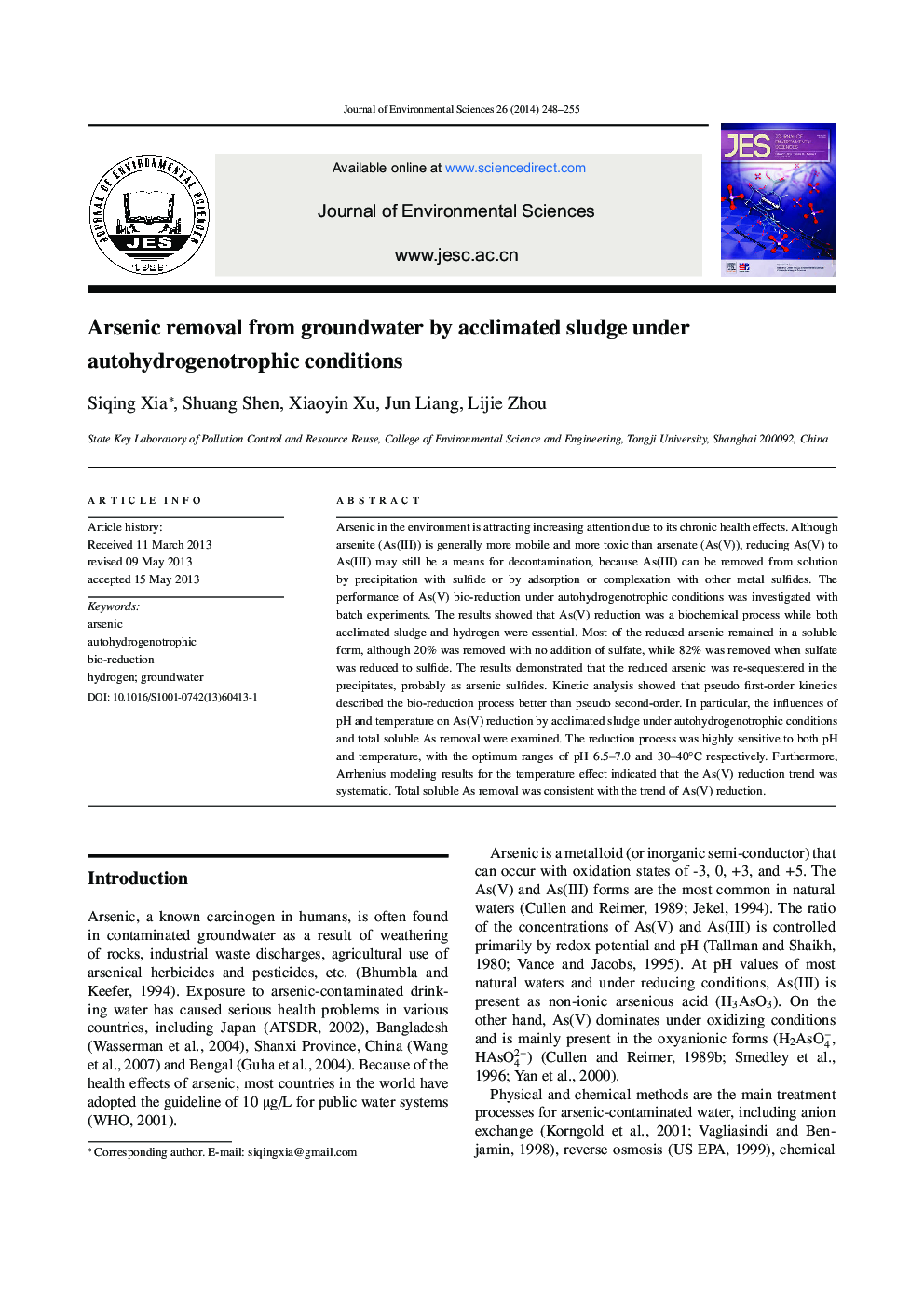| کد مقاله | کد نشریه | سال انتشار | مقاله انگلیسی | نسخه تمام متن |
|---|---|---|---|---|
| 4454642 | 1312489 | 2014 | 8 صفحه PDF | دانلود رایگان |
Arsenic in the environment is attracting increasing attention due to its chronic health effects. Although arsenite (As(III)) is generally more mobile and more toxic than arsenate (As(V)), reducing As(V) to As(III) may still be a means for decontamination, because As(III) can be removed from solution by precipitation with sulfide or by adsorption or complexation with other metal sulfides. The performance of As(V) bio-reduction under autohydrogenotrophic conditions was investigated with batch experiments. The results showed that As(V) reduction was a biochemical process while both acclimated sludge and hydrogen were essential. Most of the reduced arsenic remained in a soluble form, although 20% was removed with no addition of sulfate, while 82% was removed when sulfate was reduced to sulfide. The results demonstrated that the reduced arsenic was re-sequestered in the precipitates, probably as arsenic sulfides. Kinetic analysis showed that pseudo first-order kinetics described the bio-reduction process better than pseudo second-order. In particular, the influences of pH and temperature on As(V) reduction by acclimated sludge under autohydrogenotrophic conditions and total soluble As removal were examined. The reduction process was highly sensitive to both pH and temperature, with the optimum ranges of pH 6.5–7.0 and 30–40°C respectively. Furthermore, Arrhenius modeling results for the temperature effect indicated that the As(V) reduction trend was systematic. Total soluble As removal was consistent with the trend of As(V) reduction.
Journal: Journal of Environmental Sciences - Volume 26, Issue 2, 1 February 2014, Pages 248-255
